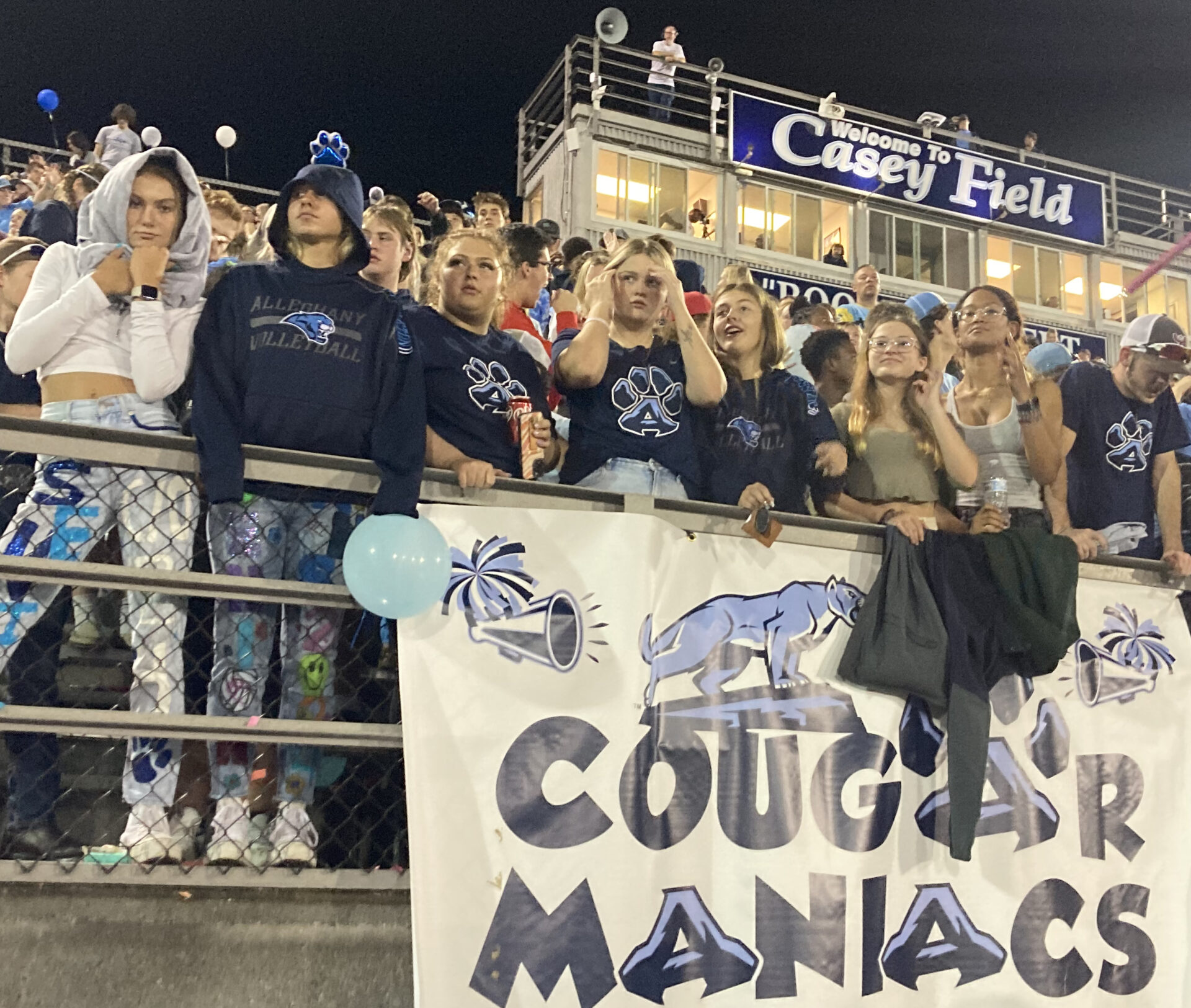This story originally aired in the Jan. 28, 2024 episode of Inside Appalachia.
There’s nothing hotter than a high school sports rivalry.
For me, that meant the Alleghany Mountaineers versus the Covington Cougars. I was a Mountaineer, and beating the Cougars was a top priority in every sport — but especially in football.
So, returning for Alleghany’s 2023 homecoming game feels weird. The fight song is different, the team is going by a different name, and the game is at Covington’s home field.
That’s because this game is part of the Alleghany Cougars’ inaugural season. Previously separate, the Alleghany and Covington school systems consolidated in the ‘23-‘24 academic year. Which meant this was the first homecoming game of the newly merged Alleghany Cougars.
Credit: Mason Adams/West Virginia Public Broadcasting
In truth, the merger has been a long time coming. Alleghany County sits on the Virginia/West Virginia border along Interstate 64. Its economy was built largely around a paper mill and the railroad. However, neither are the dominant employers they once were, and the county’s population has declined from its height in the mid-20th century.
School enrollment dropped, too. Covington High School mostly remained small but stable, while Alleghany High School lost about 1,000 students over the last 20 years. After decades of debate and years of planning, Alleghany and Covington agreed to merge.
But it was a tricky process. The schools are still making tweaks and adjustments, and probably will be for years to come. And a lot of people still have mixed feelings.
In fact, many people at the game are still wary about talking on the record about the consolidation. They seem nervous about saying the wrong thing, and getting people all fired up again.
Credit: Mason Adams/West Virginia Public Broadcasting
But there are also signs that people are coming together around the merger. Take the fight song, for instance. Writing the new song involved a lot of negotiation and compromise.
“We had to bring together all of the old fight songs and make something new for this group to hold on to,” says Alleghany Band Director Adam Eggleston. “We hired some composers we’d worked with before, some arrangers that we trusted, and so we let them piece it together very carefully.”
The same goes for choreography.
“The first count that we do in the fight song is from Alleghany, the first eight counts,” says Laura DeSilvey, Alleghany’s color guard instructor. “Then the next eight counts is actually the kick line from Covington. Then we made a whole new section for the last half. The kids actually got to come up with that.”
Credit: Mason Adams/West Virginia Public Broadcasting
The cheerleading team also developed chants and cheers that blended what the two high schools used previously.
But the main thing for a lot of students is that the consolidated football team is really good. They roll over Carroll County High School, who, like a lot of Alleghany’s opponents now, traveled from more than two hours away.
“Covington had a lot of athleticism, and Alleghany had a lot of strength and size,” says Nick Frye, a junior in the Cougar Maniacs student section. “So the merger is the two things you need in football put together: athleticism and size. It’s amazing.”
Credit: Mason Adams/West Virginia Public Broadcasting
There are plenty of other signs of how students are weathering the merger. Juniors Olivia Bell and Nicole Frye wear face paint featuring the team’s new color scheme. The transition is “not the best, but we’re getting through it,” Fry says. “We gotta have that Cougar spirit!”
They both appreciate that the newly combined school has retained elements from the separate schools. “It’s good not having a full change,” Bell says.
Other traditions continue unabated — like a group of students wearing “senior jeans.” Senior Kaidence Nicely says they picked up the tradition from seniors the previous year.
Credit: Mason Adams/West Virginia Public Broadcasting
“The way I would describe senior jeans, you put your grade on ’em, your school, what sports you play, your name, your initials, mascot — whatever you want to put on you can,” Nicely says. “I put pom-poms on mine, and I love them.”
Talking to students makes it easy to catch school spirit. There’s the band, the cheers, the game on the field, and especially, the student cheering section, led by the self-identified Cougar Maniacs.
“We’ve got the most spirit out of everyone,” says Ayden Roman, a senior. “We’re always chanting.”
“Just trying to make everybody have a good time, enjoy the game,” says Tanner Hoke, a junior.
The new merger, Hoke says, “was awkward at first. But as you can see, we’re all … all…”
“We’re all Cougars now,” says Roman, finishing the thought.
“It seems this merger just brought the whole community together instead of against each other,” Hoke says.
Credit: Mason Adams/West Virginia Public Broadcasting
Alleghany defeated Carroll County, 47-0.
The Cougars’ season eventually concluded with a loss in the playoffs. The team finished with a record of 9 wins and 2 losses.
——
This story is part of the Inside Appalachia Folkways Reporting Project, a partnership with West Virginia Public Broadcasting’s Inside Appalachia and the Folklife Program of the West Virginia Humanities Council.
The Folkways Reporting Project is made possible in part with support from Margaret A. Cargill Philanthropies to the West Virginia Public Broadcasting Foundation. Subscribe to the podcast to hear more stories of Appalachian folklife, arts and culture.
